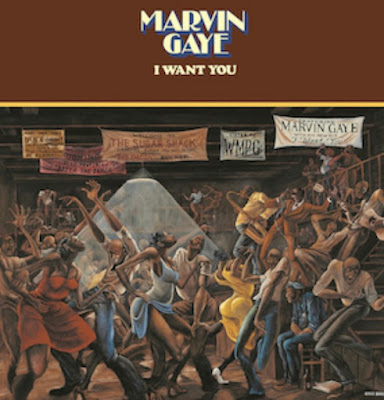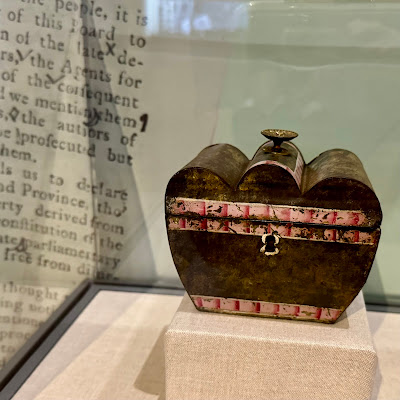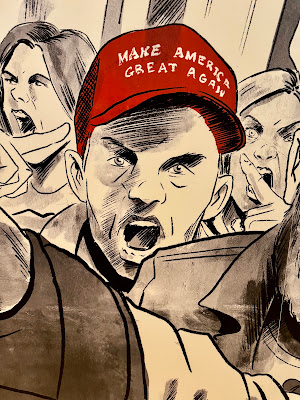Boston never has been among my favorite cities--too cold and America's colonial history is my least favorite chapter--but a warm spring day of exploration helped me appreciate Beantown much more. Puritans, who didn't cook on the Sabbath, gave it the nickname because the odor from the pots of baked beans they kept warm from Saturday wafted through the streets on weekends.
 |
| Paul Revere Statue, North Boston |
Like New York, it's definitely a place of architectural contrasts. My walk from North Station to the
Freedom Trail took me past the new(ish) buildings first.
I'd last visited
Faneuil Hall, a marketplace built before the American revolution,
with David in 1982 shortly after it was re-developed by the Rouse Corporation and became one of the country's most popular tourist attractions.
The
Custom House Tower, now a Marriott Hotel, was built upon landfill and opened in 1847. Once topped with a dome, the clock tower was added in 1915. It's visible throughout the Financial District.
A one-bedroom apartment in this old
cast-iron gem--built in 1859 but designated a landmark building only last year--rents for $3640.
By the time Thomas Crafts declaimed the Declaration of Independence from the balcony of the Old State House for the first time on July 18, 1776, American revolutionaries had pulled down and burned the decorative figures on the building's top corners.

But the lion and the unicorn had long been replaced when
Queen Elizabeth II and Prince Philip waved from the balcony when visiting during America's Bicentennial. The animals represent England and Scotland, respectively. They're what lured me inside.
 |
| Photo by David L. Ryan, Boston Globe (1976) |
History, like everything else, changes with the times. That's what I told Allen, the enthusiastic kid who briefed me in the Council Chamber, hung with portraits of kings, where colonists with money and property--around 35% of the population and, you guessed it, mostly old white men--once petitioned the British officials they had elected. You even could earn the right to vote by killing members of the local
Penobscot tribe. Two scalps of men, women or children would do the trick. Call it savage suffrage.
After the revolution, in the same room, a newly minted American petitioned the nascent Massachusetts government to claim the property left behind by her loyalist husband who had fled the country. The state declared him dead, granting his wife the right to inherit.
Apparently this is where the chamber's redcoats enjoyed a cuppa.
A tea "caddy" is prominently displayed for obvious reasons.
Props to the curators of "Impassioned Destruction: Politics, Vandalism and the Boston Tea Party," an exhibit that examines other American traumas through the lens of the 1773 event which children of my generation were taught to cheer as our country's first step towards independence. But if history changes with the times, so does your perspective.
Take this dignified, intelligent-looking fellow for example:
Thomas Hutchinson, a Harvard graduate who, as governor of the colony at the time, was responsible for dealing with the local rebellion. The mob protesting more "taxation without representation" burned down his home even though he questioned the legality of the Stamp Act, a later decree of the British Parliament that had incited the arson. I never thought much about the fate of loyalists until I learned more about him. After the revolution, Hutchinson spent his life in miserable exile, homesick for his native Massachusetts, because he had chosen the wrong side of history.

Viewers of the exhibit--which also included accounts of the
Ursuline convent riots in 1834 and the
Gulf Tower bombing in 1974, both unfamiliar to me--are given the opportunity to vote whether or not each event was justified by adding a (free) penny to one side of a scale labelled "yes" or "no." Given the fact that Massachusetts is among the most liberal of states, I was just as shocked to see the scale almost evenly balanced as I was to find that the curators ended the exhibit with the
2021 attack on the Capitol. It took me a minute to deduce that tourists likely visit the museum in greater numbers than residents, and that those visitors may betray a "tea party" bias.
Thoughts highly (and enjoyably!) provoked, I spent the remainder of my time in Boston wandering. The lunchtime crowd in
Norman B. Leventhal Park demonstrated the socializing opportunities that the slow-building "return to office" trend offers employees.
It seems as if they're biking back, too. There wasn't a slot to spare at this tower.
Do you suppose this glass structure will be around in a century?
During my brief visit to North Andover, Tom and I discussed his Hungarian heritage, which includes requesting locker number 56 when he uses the gym. Who knew there was a rather ungainly memorial to the
Hungarian Revolution downtown?

The magnificent terra cotta edifice of the
Chadwick Leadworks building reminds passersby that heavy manufacturing once employed most of Boston's worker bees.
A trade route map displayed at the Old State House indicates how much the Wharf District has changed, too. Tall ships once loaded with timber, livestock, whale oil and yes, enslaved Africans (until the end of the 18th century) sailed in and out of Boston's harbor. Today's traffic is largely local pleasure craft.
The Greenway connects North and South Boston.
Boxer
Tony DeMarco welcomes visitors to the heavily Italian North End. The phrase "Boston strong" always has struck me as slightly pugilistic.
The combination of my t-shirt and the
Old North Church reminded me of an unforgettable lyric from "
Five Years," Bowie's most apocalyptic song, even though its worshippers have been Protestant since 1723.
A cop knelt and kissed the feet of a priest
And a queer threw up at the sight of that
On my way to Paul Revere's house, I stumbled upon
Monica's Mercato & Salumeria where, for $20, I purchased an enormous buratta caprese sub (worth every penny after amortized over three lunches, although it did require some rearranging of my backpack).
I didn't have time to go inside either the Old North Church or Paul Revere's house. Can I still check them off my "been there, done that" list?
By now the temperature had reached 80 degrees and a few lucky families were sunning and cooling off in a way that would have shocked their Puritan ancestors.
I must admit I was a little shocked, too, as I picnicked on half my sub sandwich just across the street from South Station, truly a transit hell hole. Other than the child depicted on this mural, I couldn't recall seeing many African Americans during my visit. Boston, which got a national black eye from
its hostile reaction to busing in the 1970s, remains highly segregated.




















































